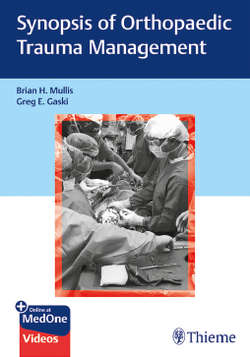Читать книгу Synopsis of Orthopaedic Trauma Management - Brian H. Mullis - Страница 80
На сайте Литреса книга снята с продажи.
V. Modifiable Risk Factors for Osteoporosis
ОглавлениеA. Estrogen deficiency—postmenopausal, hypogonadism, low caloric intake, excessive exercise.
B. Medical conditions
1. Genetic: Ehlers–Danlos syndrome, Marfan’s syndrome, Gaucher’s disease, hemochromatosis, homocystinuria, hypophosphatasia, cystic fibrosis.
2. Inflammatory—rheumatoid arthritis.
3. Endocrine: Cushing’s syndrome, hyperthyroidism, hypothyroidism, hyperparathyroidism, hypogonadism, androgen insensitivity, anorexia nervosa, hyperprolactinemia, premature menopause, Turner’s syndrome, athletic amenorrhea, Klinefelter’s syndrome.
4. Gastrointestinal—celiac disease, chronic liver disease, malabsorption, vitamin D deficiency.
5. Renal—chronic kidney disease.
6. Neurologic—epilepsy.
7. Malignancy—multiple myeloma, leukemia, lymphoma.
C. Medications—heparin, antiepileptics, immunosuppressive medication (cyclosporine, tacrolimus), chemotherapy, glucocorticoids, lithium, methotrexate, thyroxine, total parenteral nutrition.
D. Sedentary lifestyle and prolonged recumbence.
1. Mechanical loading of bone by muscle pull is more anabolic to bone than weight born due to obesity.
E. Diet—deficiency in calcium, vitamin D, or magnesium.
F. Excessive alcohol use
1. Has a direct inhibitory effect on new bone formation and slows remodeling.
2. Leads to poor nutrition.
3. The direct effects of alcohol are quickly reversible (2–3 weeks).
G. Smoking
1. Mechanism is unclear, however some evidence suggests that nicotine impairs new bone formation.
2. May also be due to lower body weight and BMI among smokers, or promotion of a pro-inflammatory state which tips the remodeling balance in favor of bone resorption.
